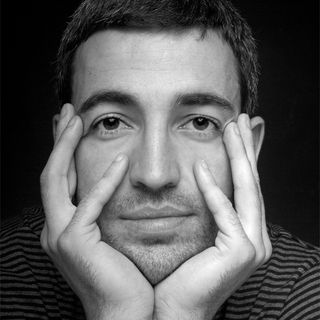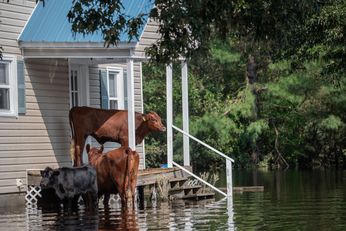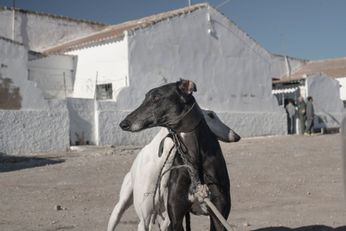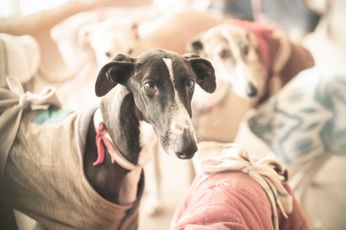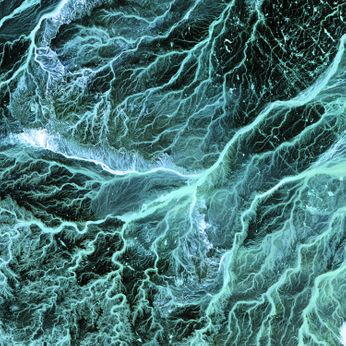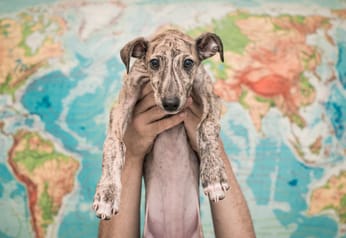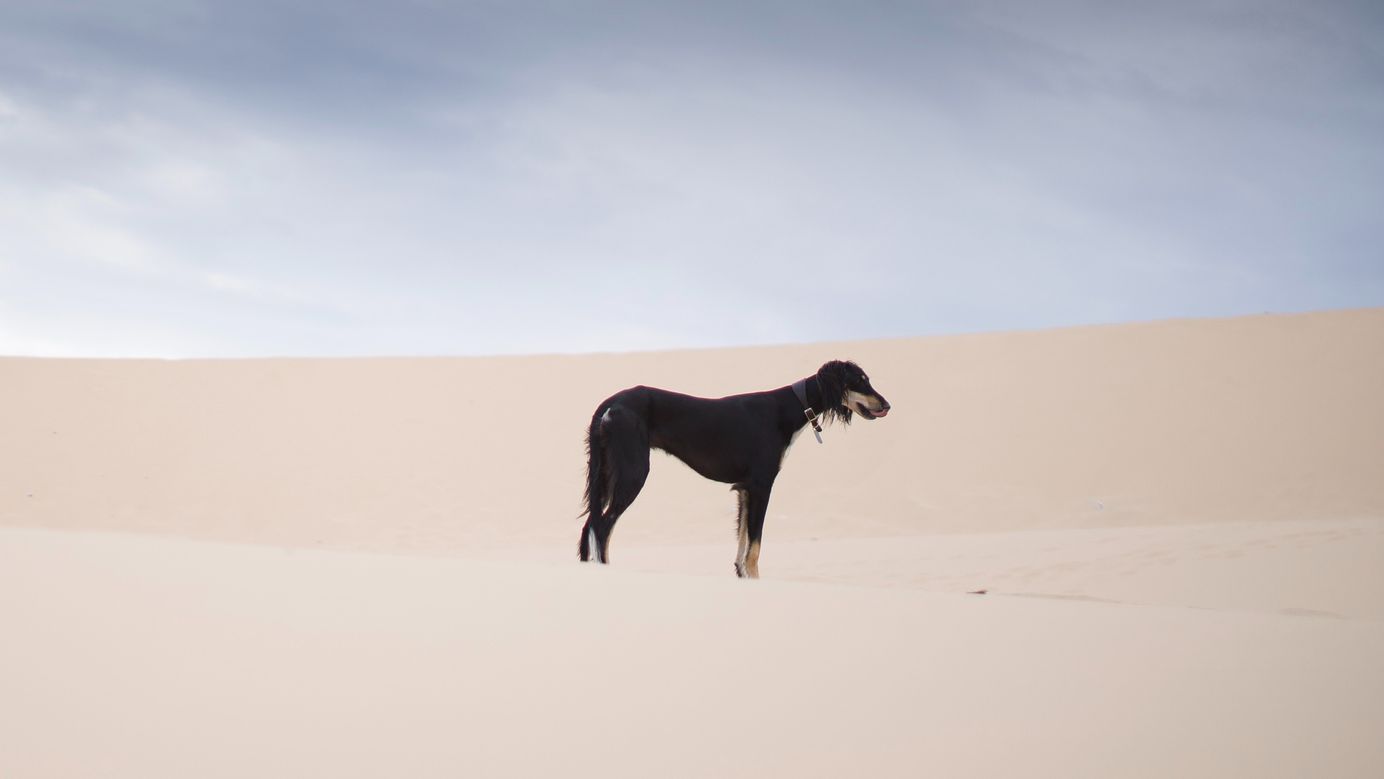
When the research into one breed of dog, took 33 to my heart
Having lived with dogs all my life, I can say that living with this one, in particular, a galgo, is different. And the more I talk about it with sighthound owners, the more similar all of our stories seem to be. There is something healing about it.
Table of Contents
Today I want to share some knowledge about the personality of sighthounds, and how they make us feel, through an article written by the anthropologist and friend Pernille Monber. She is a breeder that selects based on health and longevity, with a profound pool of genetic studies looking for ways to prevent cancer, premature death, and other diseases in canines.
Pernille was a consultant for our film Yo Galgo, on the history and use of sighthounds throughout the centuries, and wrote a piece describing, better than I could ever do, what it is like living with a sighthound.
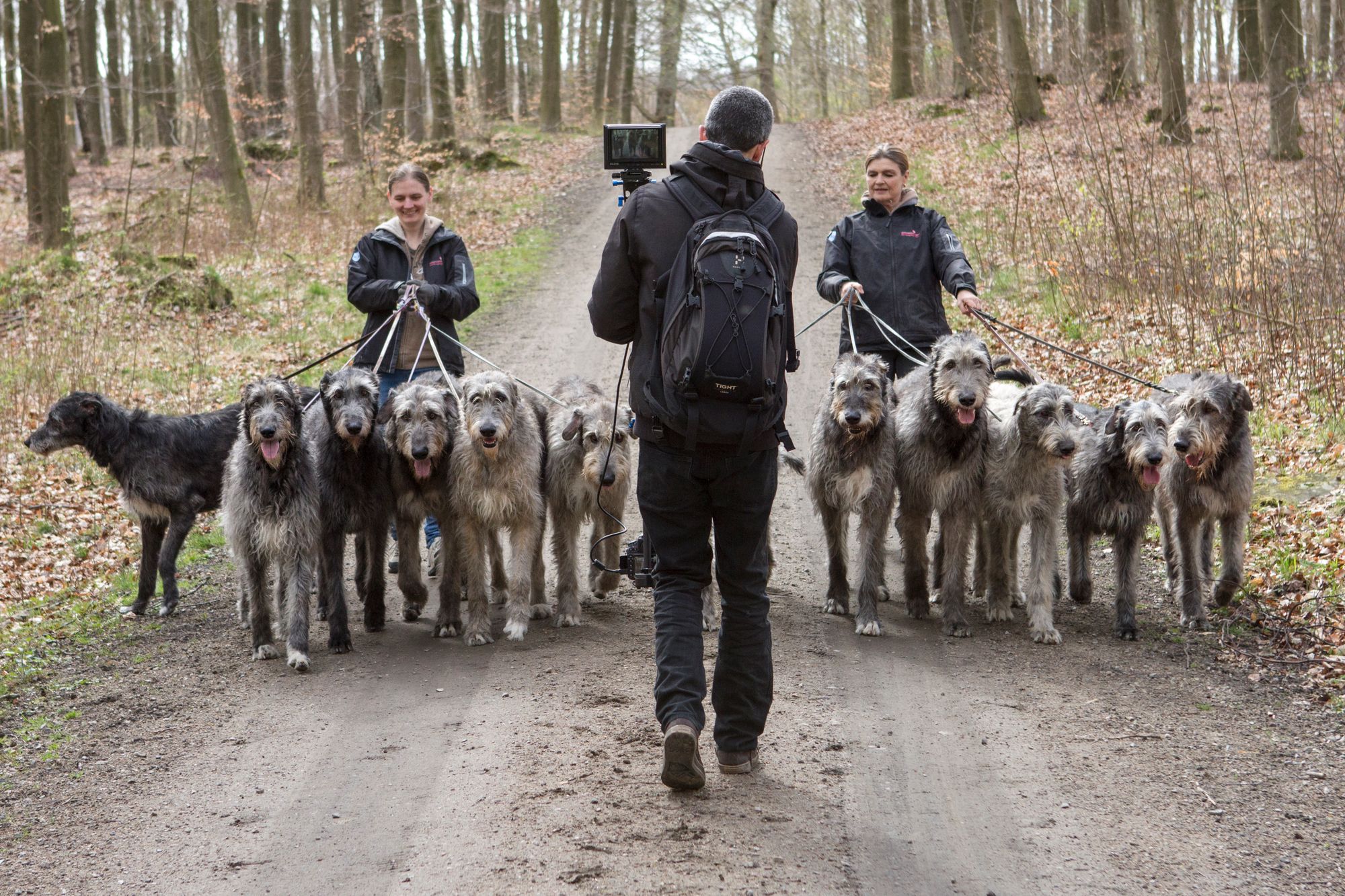
The Soul of the Irish Wolfhound
By Pernille Monber
While committing myself to write about the soul of the Irish wolfhound, it seemed straightforward and an obvious `must´ in depicting the breed. However, it has proven a task that is anything but “straightforward”. Conversations among wolfhound owners often reveal an implicit mutual understanding of the characteristic nature of the Irish wolfhound. However, rarely is the description of the soul of these hounds put into more comprehensive accounts. Even the official breed standard is lacking details about the desired temperament of the Irish wolfhound, it merely states: “Lambs at home, lions in the chase”. A couple of relatively obsolete metaphors: a lamb and a lion in two incomplete sentences, intended to describe something as important as temperament.
Those, who have lived with the Irish wolfhound, know and appreciate its dignified, gentle, and laid-back temperament and mannerisms and are able to relate to the intended depiction through metaphors. Trying to understand the true nature of the breed will require additional insight from someone unfamiliar with these hounds. The subsequent attempt at describing the subtle, yet profound nature of the greatest of canines will inevitably take the form of a subjective account, undeniably tinted by a love affair spanning four decades. In describing the soul of the Irish wolfhound, the concept of soul is not to be understood in the original religious sense, but rather as the nature, the mind, or the psyche of the Irish wolfhound.
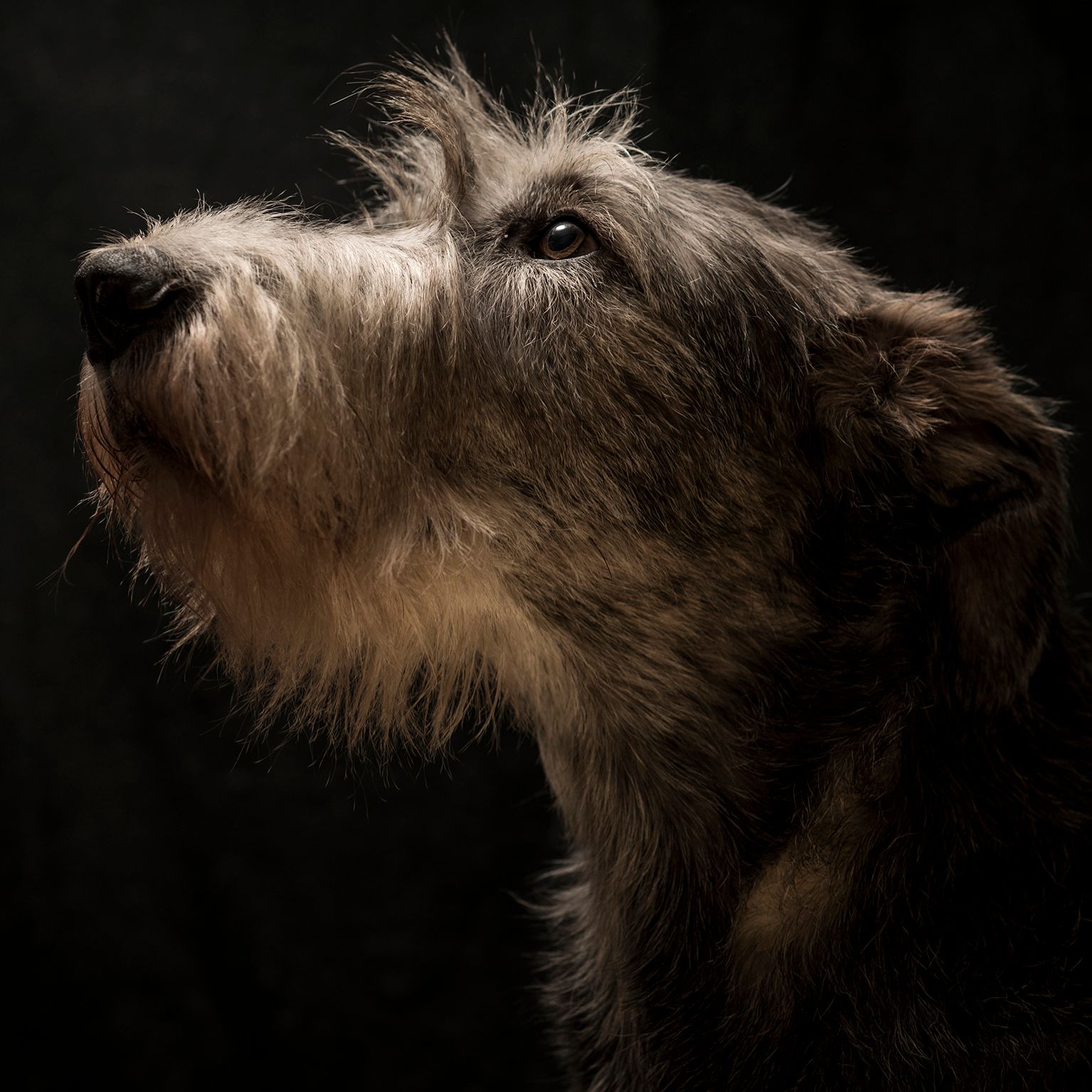
History
In rare comprehensive accounts of the nature of the Irish wolfhound and his forefathers, these great dogs are always described with admiration and affection - but in passing. In many accounts and myths, the dogs are said to possess human-like characteristics and in the earlier legends, there are metamorphic descriptions of humans, who are transformed into dogs or vice versa.
However, one historical account is particularly fascinating: The Greek philosopher and historian, Arrian (Lucius Flavius Arranus, 86 -160 AD) give a lengthy and detailed account of his preferred type of dog, a Celtic grown, which is presumed to be the ancestor of Greyhounds, deerhounds, and Irish wolfhounds. Arrian has written about what looks like one of the very first breed standards, with a long list of desired points in a dog. He also provides guidelines for raising and caring of large hounds. In 1931 Phyllis Gardner writes: “Arrian himself kept a Celtic dog, whom he had reared himself with great care. She was blue-grey in color. “She is willing and spirited,” he writes, “Swift, and neat on her feet, so that when she was in her prime she was able to take four hares in succession single-handed. For the rest, she is most affectionate.” Gardner, p. 33-34) It is intriguing to read such an insightful and endearing account of a man´s profound relationship with dogs, dating back almost 2000 years. Arrian writes: “There is nothing like a soft warm bed, best being with a man, because thus they become fond of humans, and they find pleasure in human skin, and feel no less affection for the one they sleep beside than for the one who gives them food. And a man would notice things that trouble the dog, so as to look after it in the night if it is thirsty or if it has a call of nature; he would also know how much rest it had. For if it should stay awake, or dribble a great deal in its sleep, or bring up some of its food, it is not safe to take it to hunt; the man who shares its rest would know these things.” (Arrian, in: Phillips & Willcock, p. 103)
First impressions
The first time I met wolfhounds, I was overwhelmed by their immense size and scruffy appearance. I found them downright ugly, however, it was fortunate for once that my family disregarded my reservations, and brought two young bitch puppies into our household. This was in 1976. I am convinced that size inevitably occupies our first impression of this breed and to a degree, where we notice little else. Visiting a dog show to become better acquainted with the breed, will offer little more, than the initial impression of stoic creatures of great size. In the midst of noise and barking around the exhibition rings at the dog show, one encounters an oasis of silence where the Irish Wolfhounds are located.
Like many of the sighthounds, the Irish Wolfhound is polite, dignified, and somewhere between aloof and friendly to visitors. Strangers have to prove themselves, in order to earn insight into what’s hidden behind the stoic façade.
If you are privileged enough to spend time with a pack of wolfhounds on their home turf, you will discover the soul of the Irish Wolfhound. They are playful, rambunctious, fun-loving creatures with an exquisite sense of humor and highly developed social skills, both in their interaction with fellow dogs and with humans.
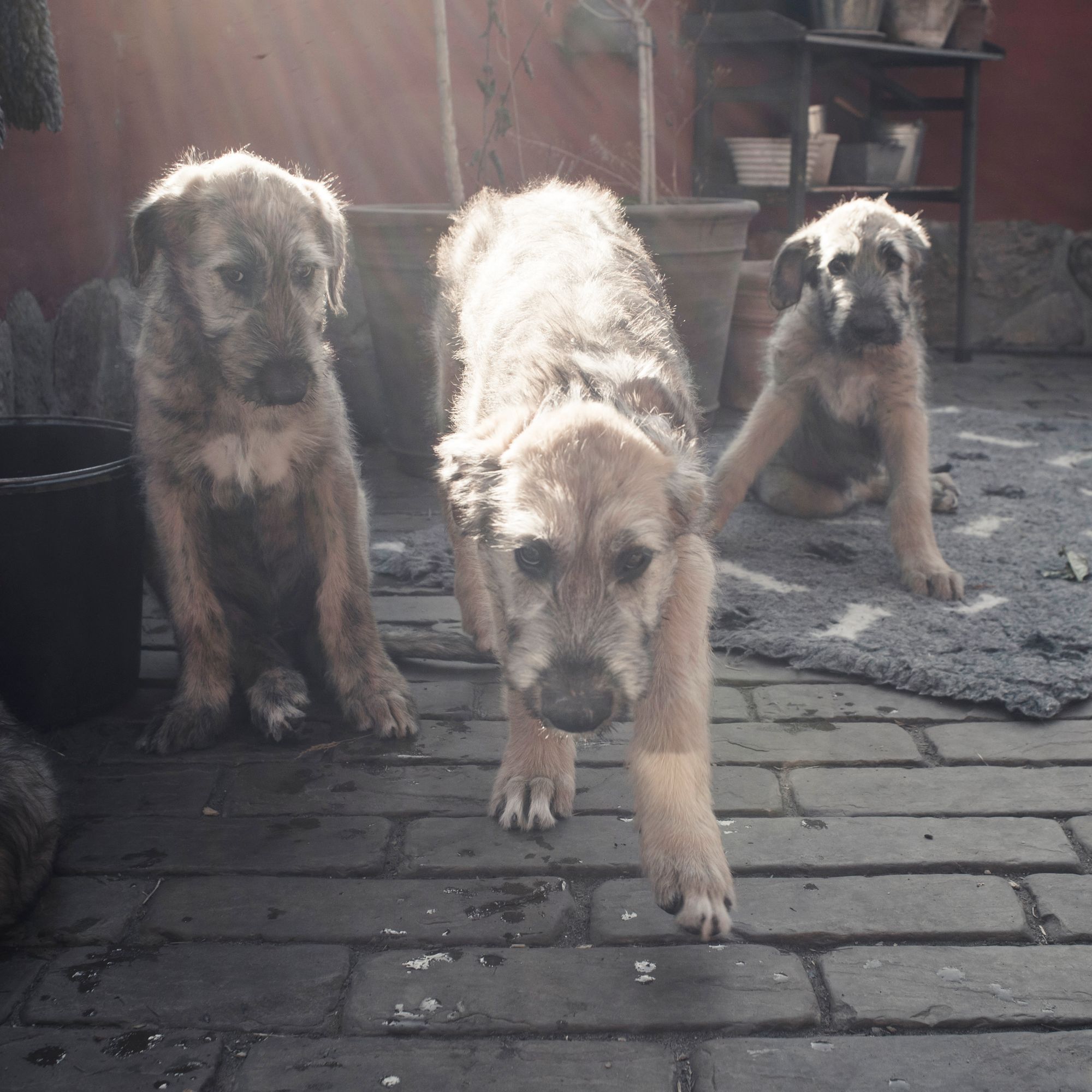
The canine-human bond
Irish wolfhounds are some of the most generous and gregarious beings I have ever come across. They are dignified, rarely needy, or prone to separation anxiety.
Once you have connected with your Wolfhound, you have been given the gift of a profoundly honest bond with a dog who loves you because he chooses to do so - not because he needs to.
You inevitably feel privileged, if you have been loved by a wolfhound. Once the bond has been established between you and your wolfhound – not before, will you be able to start working with him? He simply needs to trust and respect you completely in order to cooperate. A wolfhound will not learn through harshness or heavy-handed treatment, on the contrary, that will just make him resign into an almost untouchable state of introversion.
The author, John Donovan, offers a bit more about the character and psychology of the wolfhound when he writes:
“Another prominent characteristic of the breed is dignity. A Wolfhound will perform in the ring or obey only if the action retains his dignity. He regards himself as a person and as a member of the family community and, as a result, pays very little attention to lesser dogs, regarding them as too low in rank to merit any more than the slightest notice.” (Donovan p.71)
The wolfhound is too intelligent to engage in repetitive work, but will do the exercises, if you are capable of making the work fun, interesting, and worth his time and effort. For those who embrace it, the bond between humans and their wolfhound companions can become incredibly strong. It is tempting to perceive the connection as having almost magical components. Countless wolfhound owners have expressed that Wolfhounds are almost human in their own ways. At the risk of being accused of anthropomorphizing, I admit it appears so, from a human perspective. However, perceiving it from a slightly different angle, the humans share some social and emotional frames of reference with dogs. Subconsciously, we are just able to relate to one another.
We are amazed, when we meet other creatures with empathy, profound insight and intuition, and thus conclude that they are “like humans” rather than the other way round – or that there are just plain similarities between many species. The most amazing thing about our hounds is that they "bother" to try to understand us and our moods. My Terriers are much more pragmatic about their human relationships. Few other dogs will study the minute details of human expression and behavior like wolfhounds. Wolfhounds are different from many other dog breeds and their wild cousins in a particular aspect: Wolfhounds deliberately seek eye contact with humans. For most canines this is perceived as threatening and challenging behavior, but wolfhounds are capable of reading and interpreting even the most subtle of human facial expressions. They clearly understand a complex picture, incorporating the rest of the facial gesture with direct eye contact. Eye contact is frequently used amongst themselves, when they play. They have an array of different postures and expressions which involve eye contact – and they know very well how to communicate using the entire spectrum. This must be learned behavior. If you hold a neonatal puppy with both hands, so he faces you, then brings your face close to his and he will invariably move his head to the side, as if avoiding eye contact – even though the eyes are not open yet. However, Irish wolfhound puppies, which have been handled and cuddled a lot by humans, will quickly begin to study human faces to obtain information. And so it begins: Living with wolfhounds means a life under constant surveillance. Nothing goes unnoticed: Where you have sat while out of the house, the clothes you wear, the way you walk, talk, and comb your hair. Everything is constantly processed; wolfhounds simply want to stay abreast of what their humans are up to at all times. They absolutely thrive in the company of their two-legged companions. My dogs react the very minute I wake up in the morning and before I move or even open my eyes. It is difficult to understand how they recognize the transition from sleep to awakened state; my only explanation is that they recognize a change in breathing.
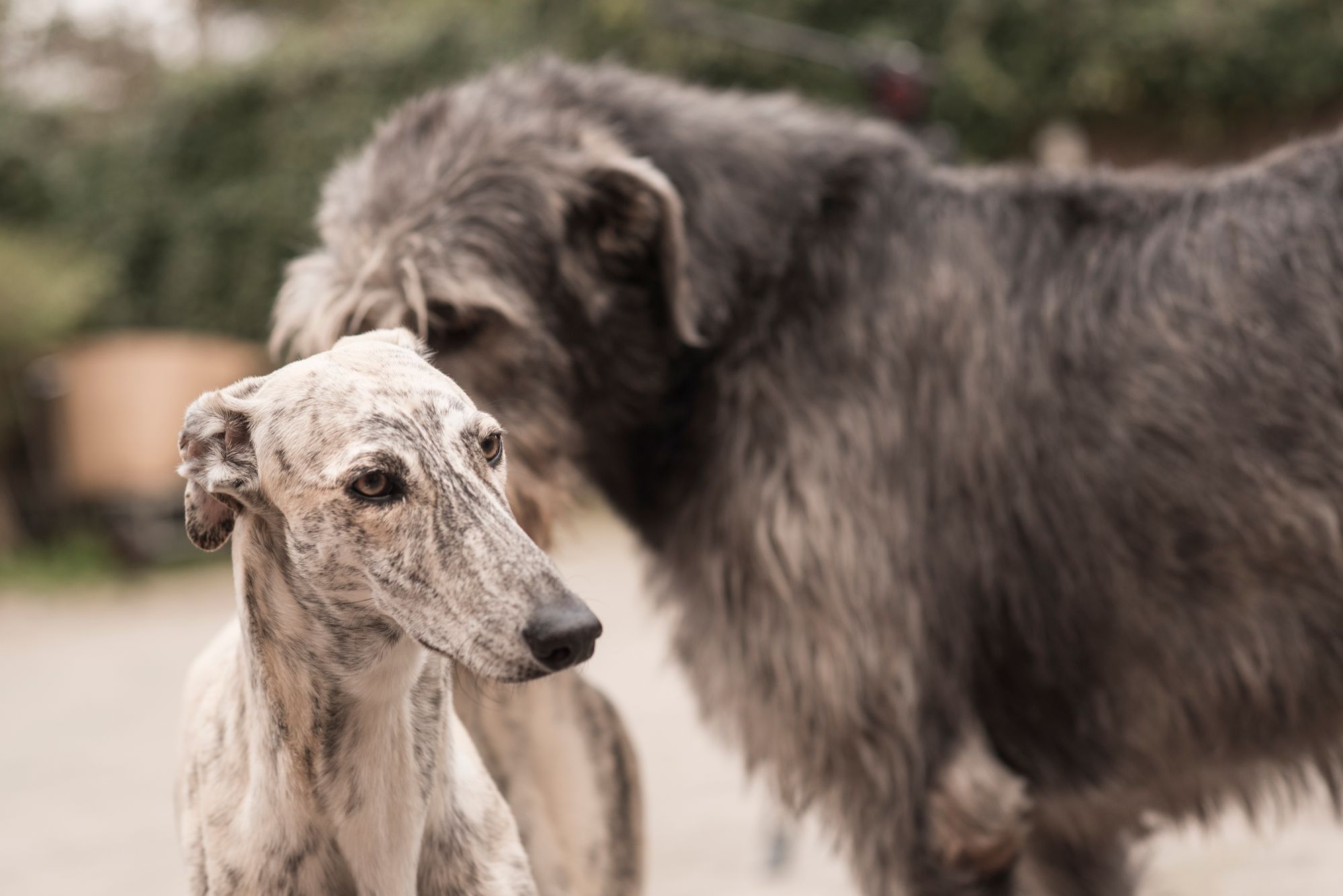
Creative canine brains
Personally, I have always been drawn to the problem-solvers, and picked this trait on equal terms with conformation in my litters. The problem solving dogs can be an incredible challenge to live with, but also most intriguing and they allow me the ultimate access into a fascinating canine mind.
Some individuals will create unique games, seemingly just to entertain themselves. One afternoon I returned home, and the first thing that met me was that the entire courtyard was covered with orange circles, doodles, and zigzagged lines. Jumping to conclusions, I proceeded to blame my artist husband for yet another bizarre urge to decorate our surroundings. He laughed and claimed: The dog did it! Yeah right, why did you do it, I insisted. It turned out that our 1½-year-old male had been playing with a piece of red brick, tossing it into the air and pouncing on it as it landed. With both front paws on the brick, he would be zigzagging backward, as dogs do while playing with bones and other objects. Apparently, the youngster discovered the lines emerging in the aftermath of the brick; he changed his focus to the lines he had involuntarily created, stopped tossing the brick in the air and pouncing on it. He just proceeded to back up with the brick under his paws as if he took pleasure in leaving a visible red trail. I had the pleasure of witnessing this remarkable behavior a few days later with the same piece of brick, which later disappeared and after that, we never saw him doing it again.
On a different occasion, a friend was visiting with her adult male Irish wolfhound, which was notorious for breaking out. He had no intention to run away, but clearly enjoyed this as a pastime. He was in my courtyard and soon bored with the confinement. He started opening doors and letting the other dogs out. We locked all the doors and watched him from the window. He proceeded to work the last of the doors. First, he tried opening the door by biting the handle, pulling it downwards. Most of my dogs use their front paws in opening doors, so this caught my interest. This locked door wouldn´t give way, so he backed off a few steps, clearly thinking up a new strategy. The cylinder for the key was an old-fashioned kind that protrudes almost an inch out from the door. He went for the cylinder with his mouth and diligently tried to manipulate it to open the door. When that failed, he soon backed off thinking for a minute, and in a final attempt to open the door, he went for the hinges, attempting to turn them like handles. The incident once again confirmed that wolfhounds hold vast depths and it is up to us to find access to their world.
The wolfhound is a keen observer and marvellous at assessing and understanding many different situations. I remember, once I was in the middle of a debilitating migraine attack and having sought refuge on the bathroom floor. It was the only cool place in the house, where I could also shut the blinds to keep the daylight out.
I had dozed off when I was abruptly awakened by 7 curious heads, which were all pushing and shoving, butting me with their noses and licking my face. I was too weak to complain or tell them to go away. I then heard a low rumbling growl; I sensed the bustle of feet and a dog leaning on my back. I felt the vibrations of more low-frequency growls against my back, and then there was complete silence.
My oldest wolfhound concluded that I was ill and unable to handle the situation, so she decided to take over and chase the other dogs out of the bathroom. We just lay there back to back for several hours; an occasional low rumble ensured that the curious heads in the doorway would not get to me or bother me. Somewhere, above and beyond the migraine, I felt very privileged, loved, and cared for.
This scenario is by no means unique. There are countless stories about this almost magical bond between wolfhounds and humans. An English breeder once shared a touching story of how one of their wolfhounds refused to leave the bedside of his dying wife and broke into a long mournful howl as the wife passed away. A Swedish wolfhound owner wrote to me, sharing a similar account of a wolfhound, which stayed by her ailing mothers' side until she was taken to hospital.
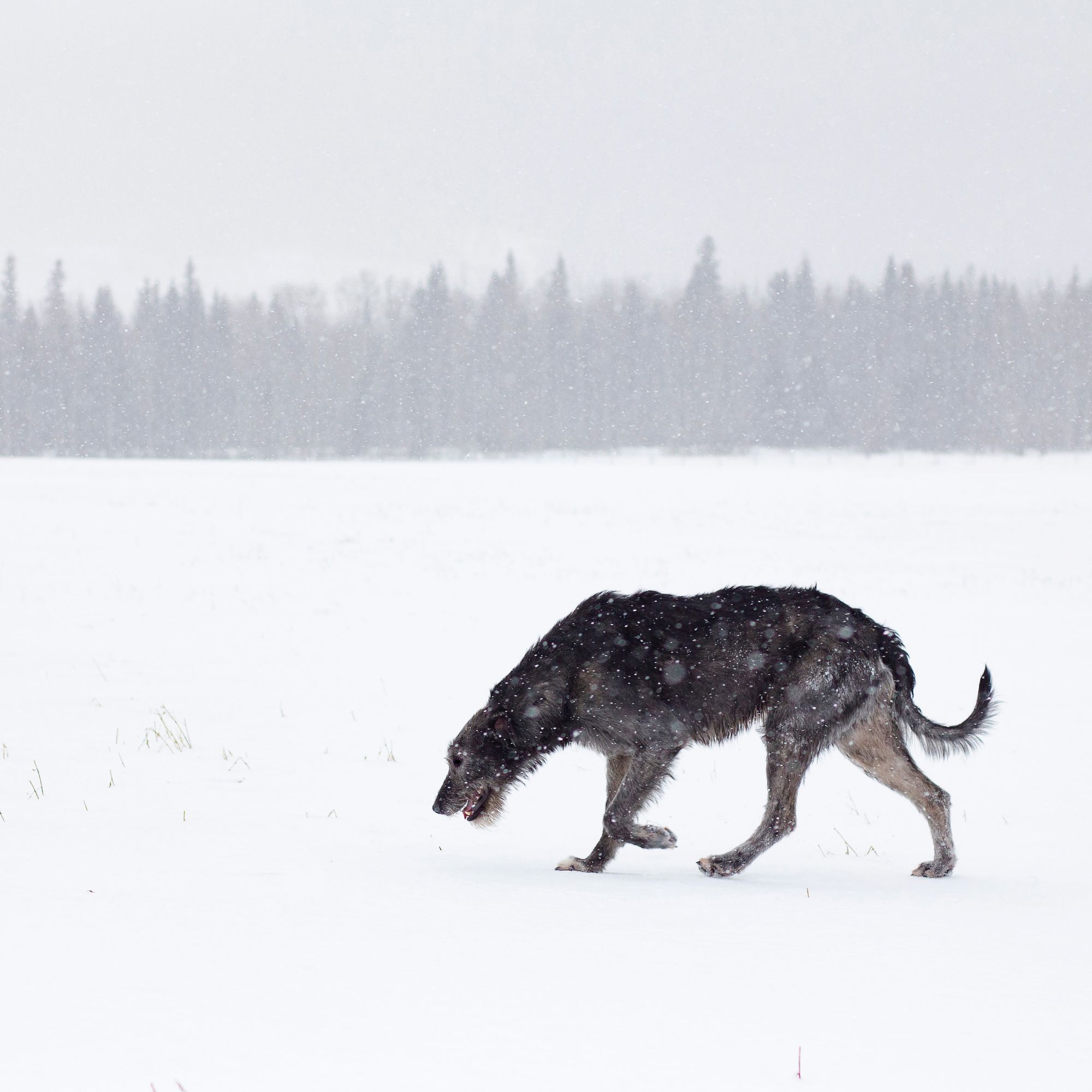
Hunters
As kind and affectionate the Wolfhounds can be, they also contain the primordial drive to hunt.
Walking through a shrubby landscape with a pack of Wolfhounds offers an amazing lesson in canine observation and communication skills. The entire pack is geared into hunting mode, the adrenaline is pumping, their heads held high with alert ears. Each dog has its attention divided equally on any sign of prey animals and whether other dogs show signs of having discovered prey. The hounds work together as one finely tuned machine, where all gears operate in sync. Communication happens so quickly, that it is difficult to follow for the untrained human eye. When a hound discovers prey, the entire pack will course first and investigate later. There is simply no time to stop and think before the chase. The hounds will position themselves strategically in their pursuit behind the prey, all the time watching each other’s every move in relation to the fleeing animal.
The most amazing thing is that Irish Wolfhounds have been unemployed as hunting dogs for many generations, yet in most of them, the drive is still intact. This could be attributed to their versatile nature as wonderful loyal companions as well as hunters. Two distinct characteristics on opposite ends of the scale, which nonetheless haven’t been conflicting, to the point where there would have been a need to breed selectively for different characteristics as their lifestyle changed. It is, however, extremely important that IW owners understand and respect that their sweet, affectionate house pet also contains an eager and capable hunter. Way too many wolfhound owners are in denial of this fact and take unnecessary chances when walking their dogs in public places.
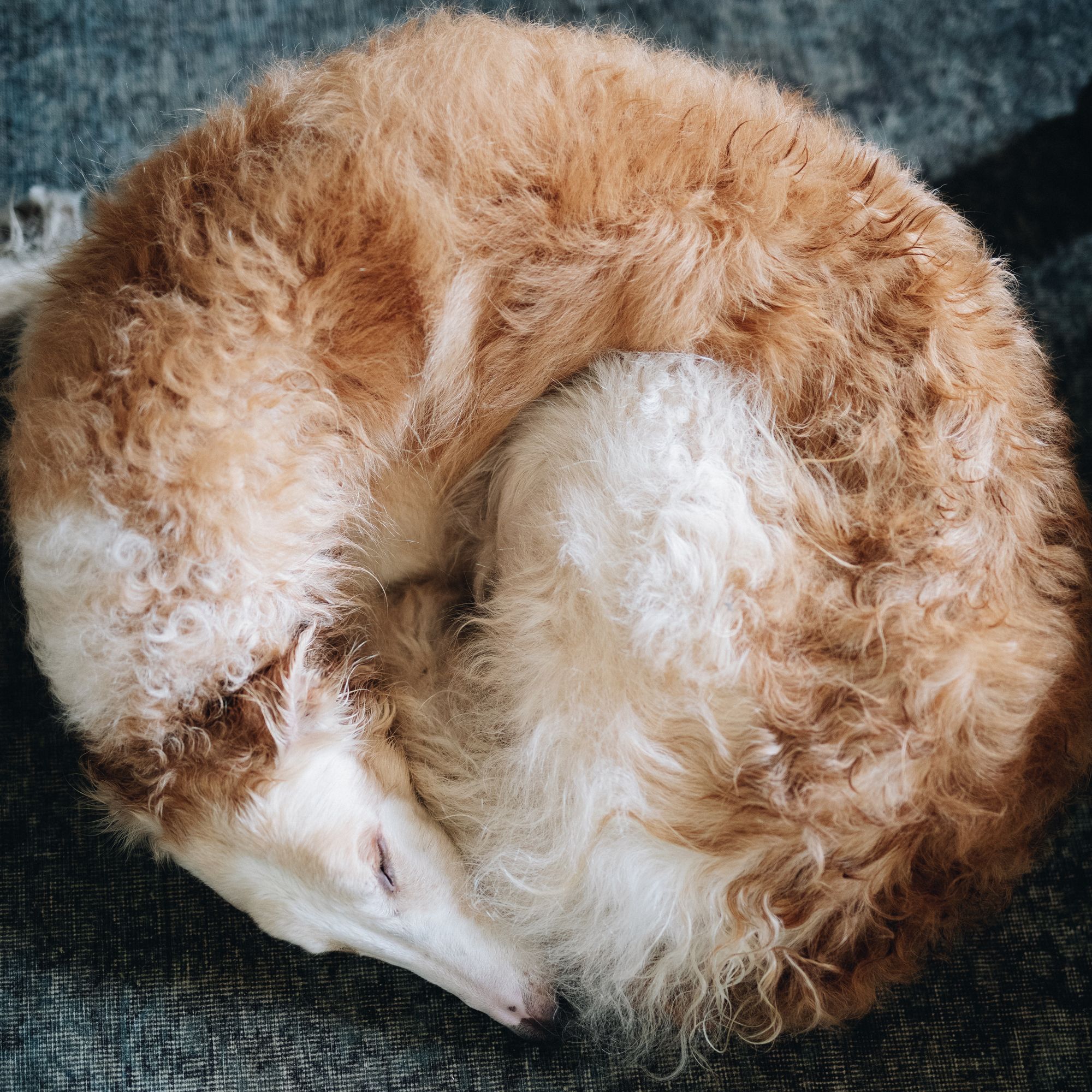
Sighthounds in the family setting
Wolfhounds seem to have a great desire to know everything that goes on around them at all times. Their superior observational skills are eternally at work, also in a regular family setting. An Irish wolfhound can be the most generous companion you will ever encounter, if you make yourself worthy of his affection. Once the bond of affection is established between a hound and a human, you will receive tenfold your input in the relationship.
Having by nature been denied a spoken language, they put all of their other senses to work in order to gather as much information as possible about their environment – and especially about what their human family members are up to. They pick up on every movement or the slightest of sounds. My hounds will know if I am setting my hair before starting the daily chores or if I am brushing my hair prior to leaving the house. I am not aware they are doing anything different, they are. If I put on a new garment of clothing, they immediately come up and sniff, ponder and sniff.
Unlike many other breeds of dogs, the wolfhounds study human facial expressions intensely. They seek eye contact and are experts at reading human moods. Reprimanding a rambunctious youngster or a sneaky senior for a misdeed requires quite a poker face. If the dog detects the slightest upward curl in the corners of your mouth – they will immediately conclude that you didn't really mean what you said before.
There is no doubt that when dealing with hounds of such great size, there is a need for a gentle and balanced temperament. Any aggression or shyness in the character could entail a potentially dangerous dog. As breeders and owners, we have a great responsibility to ensure the continued reputation of this breed as “the gentle giants”.
The article on audio
References
- Donovan, John A. K.
- 1976. “You and Your Irish Wolfhound”
- Denlinger`s, Fairfax, Virginia, USA.
- Gardner, Phyllis
- 1931. “The Irish Wolfhound – A Short Historical Sketch”
- The Dundalgan Press, Dundalk, Ireland
- Phillips, A.A. & M.M. Willcock
- 1999. “Xenophon & Arrian on Hunting”
- Aris & Phillips Ltd, Warminster, Wiltshire BA12 8PQ, England
The 33 sighthound family
If you know more, please reach out.
- Afghan Hound
- Azawakh
- Borzoi
- Chippiparai
- Galgo Español
- Greyhound
- Hortaya borzaya
- Irish Wolfhound
- Italian Greyhound
- Kanni
- Magyar agár
- Mudhol Hound
- Old Croatian Sighthound (extinct)
- Patagonian Greyhound (Galgo barbucho)
- Polish Greyhound
- Rajapalayam
- Rampur Greyhound
- Saluki
- Scottish Deerhound
- Silken Windhound
- Sloughi
- Taigan
- Tazy
- Whippet
- Basenji
- Podenco Canario
- Cirneco dell'Etna
- Ibizan Hound (Podenco Ibicenco)
- Pharaoh Hound (Kelb tal-fenek)
- Portuguese Podengo
- Rhodesian Ridgeback
- Peruvian Inca Orchid
- Thai Ridgeback
MoonLeaks Newsletter
Join the newsletter to receive the latest updates in your inbox.

